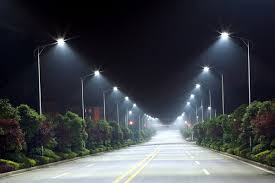Kali Holloway, Senior Writer and the Associate Editor - Media and Culture - Alternet (U.S.)
Stephan: The fact that the U.S. has become a country where social wellness is hardly a priority, let alone the first priority, has many consequences. I have written several time, and published reports on the deep unhappiness that afflicts America. Here is the latest on the Unhappiness Trend, this time the effect this social failure has had on parents.

Credit: Shutterstock / threerocksimages
“The days are long, but the years are short,” goes the old saying. That’s true of life itself, but the phrase has become a mantra of parents and caregivers, a reassuring bit of what’s called “everyday wisdom” for the perpetually sleep-deprived and stressed-out. Even parents with the deepest reserves of patience and caring need the occasional reminder that 5 am feedings, toddler tantrums and teen eye-rolls will, in the distant future, be affectionately missed when the nest is finally empty. Because while child-rearing is filled with moments of unadulterated joy and wonder, there’s another, far less-discussed open secret of parenting. And it’s that raising kids can sometimes be a real drag.
People are often loath to say that out loud, but social scientists have been confirming it for decades. The New York Times quotes scholar and UK-based author Nick Powdthavee, who cuts to the chase about what the research has to say. “Over the past few decades, social scientists like me have found consistent evidence that there is an almost […]
1 Comment
Quentin Fottrell, - Market Watch
Stephan: One of the consequences of the rise of Neo-feudalism is that the U.S. is no longer the richest area on the planet. Here is the story.

Asia is now the richest area on the planet.
Credit: notey.com
Asia-Pacific has overtaken North America as the top spot for the super-rich.
The wealth of high net worth individuals in the Asia-Pacific grew by 10% or almost five times North America’s 2% growth for high net worth individuals (HNWI) last year, according to the World Wealth Report released Thursday by Capgemini, a global consulting, technology and outsourcing service. There was a big drop from North America’s 9% HNWI growth rate the year before, dragged down by poor performance of U.S. and Canadian equities. The World Wealth Report covers 71 countries, accounting for more than 98% of global gross national income and 99% of world stock market capitalization.
Listen: This week on Catey Hill and Quentin Fottrell’s podcast Money, Markets & More(on iTunes): The slump in teen summer jobsand The worst tipper in America.
The Asia-Pacific region has 5.1 million HNWIs, compared to North […]
No Comments
Amy Wold, - The Advocate (New Orleans)
Stephan: The reality of climate change and searise, confronts the beliefs of a Red value state. And this is what happens. Like Miami this a true cautionary tale.

This is one of three shoreline protection products being tested along Louisiana’s coastline in the area of Vermilion Bay and Weeks Bay. State and federal coastal restoration agencies will test the effectiveness of these measures over the next three years in order to find alternatives to rock placement along the shore.
Credit: USDA Natural Resources Conservation Service
Louisiana’s master plan to rebuild the coast came with a bold goal: to halt the wetlands loss that sees an average of a football field eroding away from the coast every hour.
The best-case scenario predicted no net loss of wetlands by 2032 and actual land gains by 2042.
But new predictions of increased sea-level rise have scuttled those ambitions.
“We […]
No Comments
Thursday, June 23rd, 2016
Stephan: The failure of the United States to maintain its infrastructure, particularly the water and sewage aspect is a growing crisis that the corporate media can't be bothered to talk about -- it would take too much time away from their morning 'til night coverage of Donald Trump, I guess.
This has been made very clear in how the Flint, Michigan catastrophe has been treated. It gets more or less zero coverage, so you might think the situation had been fixed. However, as I reported a few days ago such is not the case. People in Flint, still drink bottled water and cook with bottled water.
But Flint is just one little case in a much larger collapse. You will remember the story I ran the other day on 2,000 cities and towns that have lead or other issues. And if that weren't bad enough, there is also the fact that the price of potable water has skyrocketed. This report tells the story.

Credit: www.vernkummersplumbing.com
Aging infrastructure + warming climate = rising prices. That’s the basic conclusion of a new report showing that clean water is getting more expensive in cities across the country — in some cases, far more expensive than what poor residents can reasonably afford for what should be a basic human right.Rates vary hugely across the country — water will cost you five times as much in Seattle as in Salt Lake City, for example — but on average, the cost of clean water and wastewater services has risen 41 percent over the last five years, according to an examination of national data by the Unitarian Universalist Service Committee, a human rights advocacy organization.
In general, researchers say water should cost less than 3 percent of a family’s pre-tax income. But in several cities that the organization looked at, average residents are paying much more: 8 percent in Baltimore for families living at the poverty line, for example, and 7 percent in Detroit.
The fundamental problem: Municipalities treat water as a pay-as-you-go product, rather than a public good supported through tax revenue, such […]
No Comments
Thursday, June 23rd, 2016
Stephan: The transition out of the carbon era is going to be complex. This story illustrates exactly what I mean.

LED Street lights
Credit: Japandailypress
Bright, energy-efficient LED streetlamps can be bad for our health, according to the American Medical Association.
Specifically, high-intensity LEDs that release mostly blue light — as opposed to the “warmer-looking” light of older streetlamps — create glare and mess with sleep cycles, the organization says.
At its annual meeting last week, the AMA officially urged communities to be careful, if they choose to install such lighting, to avoid the most intense lights and choose the least-blue option available. In an unpublished report, the group specifically recommends warmer “3000K” LED lights, rather than harsher “4000K” options.
It’s also important to properly shield the light, according to the AMA’s guidance.
Bright, blue-rich LEDs cause glare and “decrease visual acuity and safety,” which can create road hazards, it says.
These LED streetlamps emit a blue-light wavelength that suppresses nighttime melatonin production more than any other color of light does, the AMA says. Meanwhile, surveys have found that brighter nighttime street lighting “is associated with reduced sleep times, dissatisfaction with sleep quality, excessive sleepiness, impaired daytime functioning and obesity,” the group writes.
The impacts […]
No Comments















